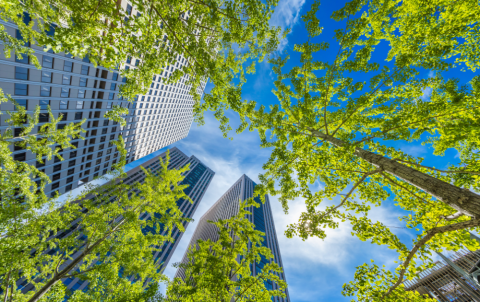The Urban Institute recently released an article about how an equity lens is essential to mitigating the effects of hotter summers that are expected in the future due to climate change. As our climate continues to rise, low-income neighborhoods and communities of color are much more likely to experience hotter summers and the effects that come with it, even compared to higher income neighborhoods in the same area. This, along with less access to air conditioning and cooler buildings, means that marginalized communities are most vulnerable to the health risks associated with climate change.

Urban areas are often significantly hotter than surrounding areas, which is known as the Heat Island Effect. Due to significant disinvestment in these areas, urban areas and in particular, low-income communities have less greenspace that can help mitigate how hot cities get in the summer. When dense cities require more roads and buildings, heat gets absorbed in materials such as concrete. Since low-income families are more likely to live in urban areas and higher income families in less dense single-family dwellings that have less concrete and more shade from trees and greenery, there is a significant difference in how the heat affects these groups.
Vermont, and especially Burlington is a unique case in the country regarding heat islands, given its architectural history. In the 19th and 20th centuries, homes in Vermont were built with the intention to trap heat, to help stay warm during cold winters, and during this time summers were significantly less hot than today. As our climate has shifted, these homes have added to the effects of heat islands. Because of this, the city of Burlington is an average of 7 degrees hotter than rural areas of the state.
These disparities are becoming more apparent as cities are experiencing record breaking heat. As the temperatures begin to rise, adverse health effects also begin to take shape, which affects low-income communities the most. Some of these health effects include higher prevalence of disease from lower air quality, and negative impacts on mental health.
Heat is not usually addressed in emergency hazard mitigation plans, but as it becomes more of a threat, it is gaining more traction. Each year there are more record-breaking heat waves across the country, which threaten the most vulnerable populations. By implementing heat mitigation plans, cities can better be equipped to ensure safety for residents, and also create more heat mitigation programs, such as expanding the Low-Income Heat Energy Assistance Program to extend year-round instead of just in the colder months.
Urban Heat Islands are not just a heat inequity issue, but also include inequities in public health, environmental justice, and economic justice. It is also a life-threatening emergency if not planned for. During a 2021 heatwave in the Pacific Northwest, all of those severely impacted did not have air conditioning, and most of them were elderly, poor, or both.
In order to resolve the impacts of excessive heat in Vermont, addressing the needs of marginalized communities must be at the forefront, in both the short run and long run. This includes ensuring people have access to air conditioning and cooling centers, as well as keeping in mind how the developed land impacts weather.
Weatherization programs can help provide better insulation and A/C installation to help keep households cool, and financial assistance can help low-income households with utility bills, which can increase as the days get warmer. VHFA is currently working on an upcoming weatherization finance program.
By implementing more cooling centers and weatherization programs, people will have some immediate relief from the detrimental heat. However, alongside this, work needs to be done to create cooler climates and make investments in climate-focused community development. By encouraging local policies that include more green space such as trees and native plants in cities, people and the cities they live in can thrive.

